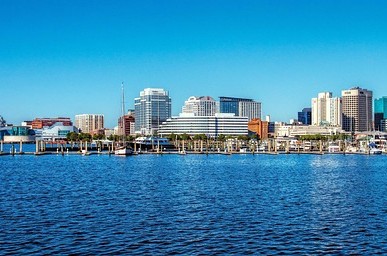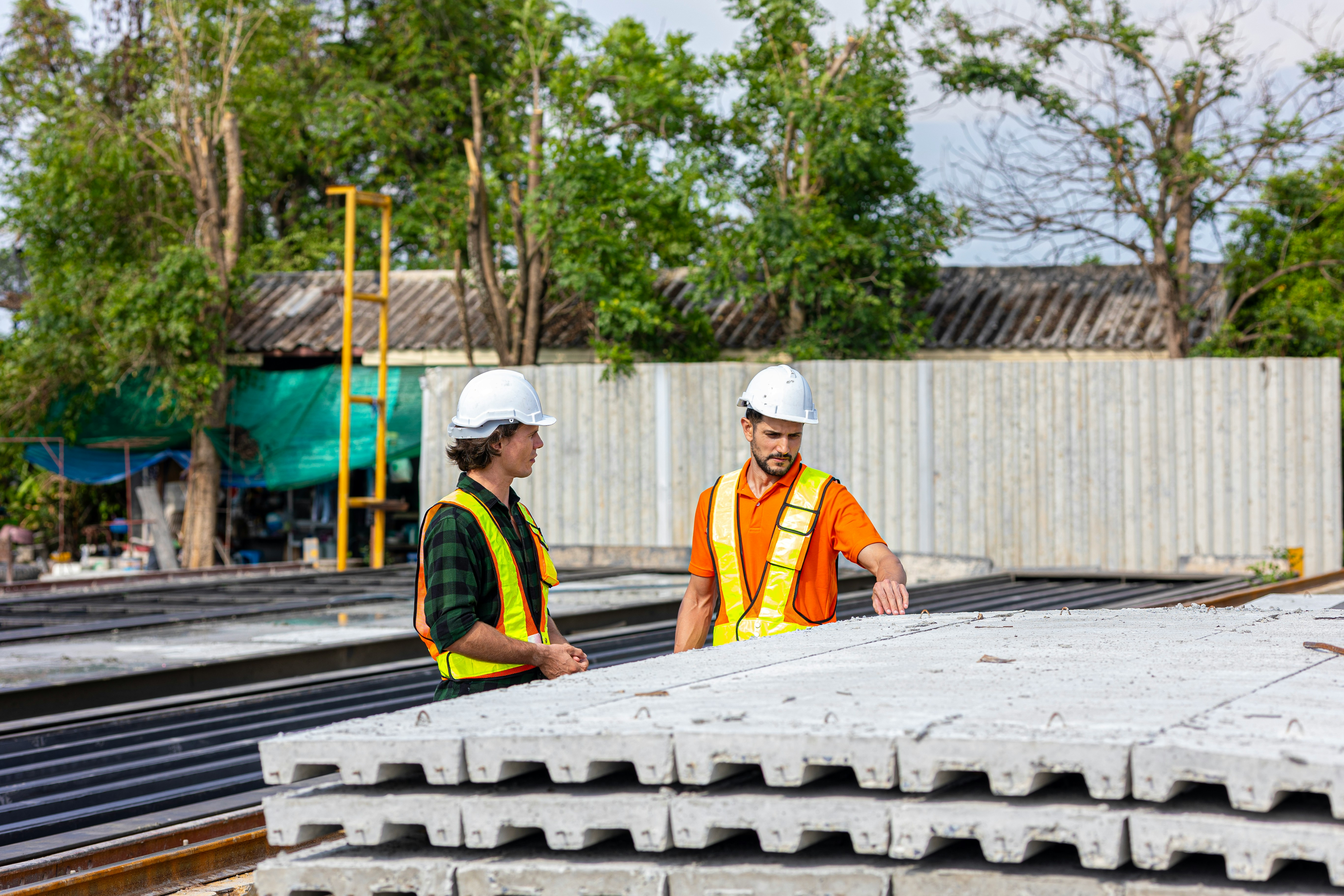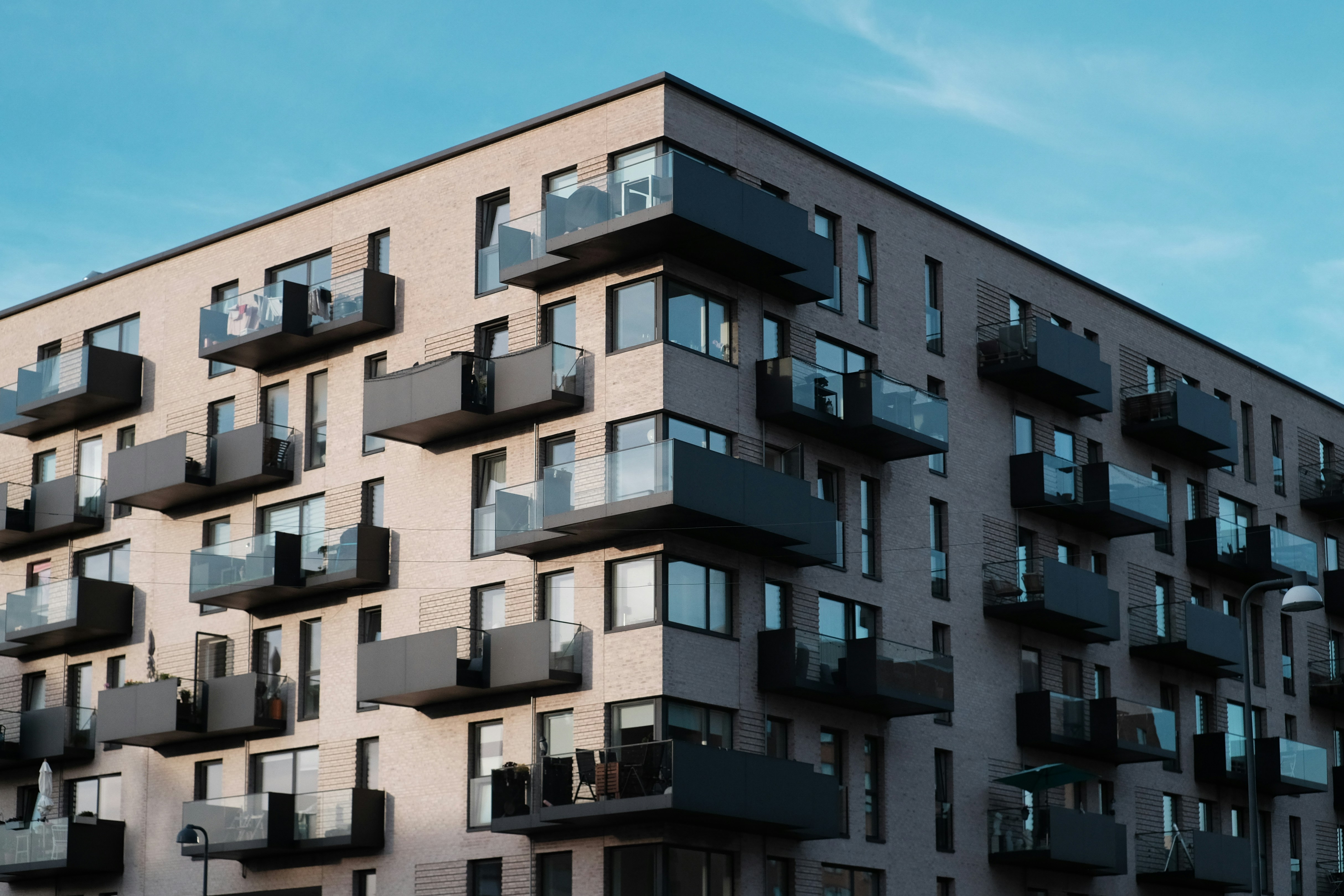

By Anna Phillips | Fri, November 7, 25
To retrofit millions of large buildings for improved energy performance, lower energy costs, and lower emissions, a growing list of coastal states and cities like DC, Boston, New York City, and Seattle are adopting building performance standards. At the same time, municipalities are weaving climate risk reduction strategies into their local zoning codes, bracing for a future of increasingly extreme weather.
So far, energy efficiency and climate resilience have proceeded on parallel tracks. But as cities grapple with the challenge of retrofitting existing buildings to withstand floods, wildfires and other climate threats a new question is emerging: could the design of building performance standards (BPS) be adapted to support resilience goals as well?
States and cities have yet to marry these two approaches. Still, the concept is gaining traction for communities eager to improve building energy performance and resilience. This post explores the potential benefits and drawbacks of combining BPS with resilience planning.
Risk Reduction Today: A Snapshot of Resilience in Action
The city of Norfolk, Va., owes much of its history to its 144 miles of coastline, but living at the water’s edge is increasingly risky. Flooding has become one of Norfolk’s greatest challenges. Land subsidence is causing the ground to sink and consequently sea levels are rising there faster than anywhere else on the East Coast.
The city has responded with zoning changes designed to strengthen its resilience. Its coastal resilience overlay zone prohibited basements and mandated that new construction in the 100-year floodplain be elevated at least three feet. It also created an innovative resilience quotient system, requiring developers to accrue points for adopting stormwater management, windstorm risk reduction and energy efficiency techniques.
Since making these changes in 2018, Norfolk has become a model of adaptive planning. Points-based resilience requirements in zoning codes have sprung up in other cities. Cambridge, Mass., introduced a “cool factor” system in 2023, a performance-driven standard for new buildings to green the city and mitigate the urban heat island effect. Similarly, Somerville, Mass., a community of about 80,000 northwest of Boston, uses a “green score” in its zoning code for new construction and major renovations that awards points for landscaping that better manages stormwater, filters pollutants, and reduces the urban heat island effect.
As with Building Performance Standards, the goal of these points-based resilience measures is to require developers to include resilience elements to protect against higher temperatures and flooding, while giving them multiple ways to comply. But unlike BPS, to date, all of these regulations have focused on new construction, helping only a fraction of occupants in cities with older housing stock and disproportionately benefiting those who can afford to buy or rent new construction. Older, inefficient homes built to outdated flood standards, with little protection from extreme heat or wildfires, do not reap the benefits.
Designing for Tomorrow: Combining BPS and Resilience into One Policy
To advocates of this approach, combining building energy efficiency improvements, greenhouse gas reductions, and increased resilience into a single policy could be an innovative way to ensure that retrofits for buildings of varying sizes and ages, including residential properties, include both energy affordability and resilience measures.
Compliance with a building performance standard is typically achieved by improving problematic parts of a property, such as poor insulation, leaking windows and doors, and inefficient gas or oil burning appliances. Bringing in the components of a resilience standard would necessarily widen the scope of the changes to include tree-planting and preservation, cool or stormproof roofs, and shaded surfaces, among other elements.
What Would This Look Like?
One approach is a community-wide asset rating, or points-based system, in which buildings receive a score that estimates their overall efficiency and resilience. Efficiency scores could be custom or based on a national standard, such as the Department of Energy’s Home Energy Score (HES) or the Home Energy Rating System (HERS). Resilience scores would have to be customized to a community’s particular climate hazards, such as tropical storms, increased flooding, wildfires, and heat waves.
Another strategy would be to set a threshold, targeting requirements at only the most at-risk or inefficient properties, such as energy-guzzling buildings or communities zoned in the floodplain. In Burlington, VT, the city’s energy efficiency standard for rental units applies only to those that consume more than 90 thousand British thermal units (kBtu) of energy per conditioned square foot per year – essentially, the worst performers.
Areas for Further Research
In 2024, the Resilience Authority of Annapolis and Anne Arundel County proposed such a project, winning a Department of Energy Resilient and Efficient Codes Implementation grant to design and implement a model code that would be easily replicable – what they called a Building Energy & Resilience Performance Standard (BERPS). They formed a partnership with several cities deeply affected by climate change, Annapolis, Md., Santa Barbara, Calif., Basalt, Co, New Orleans, La and Montpelier, Vt., that would serve as guides for implementation. ClearlyEnergy, Innsure, the Building Performance Institute, NORESCO, and Northeast Energy Efficiency Partnerships joined as partners.
The fate of the project is uncertain due to the federal government abruptly canceling the grant this October. The research completed so far lays the groundwork for interested organizations and jurisdictions to build on the findings. It also distills important questions about how a combined BPS and resilience policy would be designed. These include whether to pursue a mandatory or phased-in approach, what types and sizes of properties should be covered, how to incorporate community resilience measures and how best to implement a combined performance-based standard.
On this last point, some cities with rental energy efficiency requirements have embedded them in their rental licensing – making the ability to rent the property contingent on meeting the standard. But there is no similar existing structure for an owned residence, which could compel city governments to create a new process.
The role of home insurance companies is also worthy of more investigation. While the industry sees the value of certain windstorm risk reduction measures, there are still doubts about its willingness to lower premiums for homeowners who take steps to increase building resilience. Whether and how to place a value on measures that reduce extreme heat and manage storm water, such as tree planting, pervious surfaces, and reflective roof coatings, is largely untested. Disclosure rules recently adopted in Colorado take a step in that direction by requiring insurance companies to disclose how risk factors into home premiums.
Conclusion
Current building energy efficiency and resilience policies tend to focus on either the largest buildings or the newest ones. Building performance standard designs could be adapted to incorporate climate risk reduction measures and cover many more properties. But how to weave them together without overburdening property owners and developers is a puzzle that remains to be solved.
For occupants, the key to such a standard lies in ensuring affordability by lowering energy bills and insurance costs, and avoiding costly – and often traumatic – displacement from worsening climate disasters. This may tilt the balance in favor of focusing on the worst-performing and highest-risk properties, where owners and renters stand to benefit the most from upgrades.
Building performance standards are well established and several cities have already charted a path for performance-based resilience measures. Combining them will require more research and communities willing to experiment with a novel approach.



